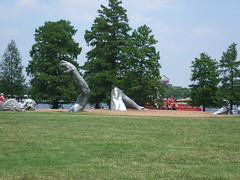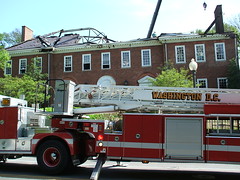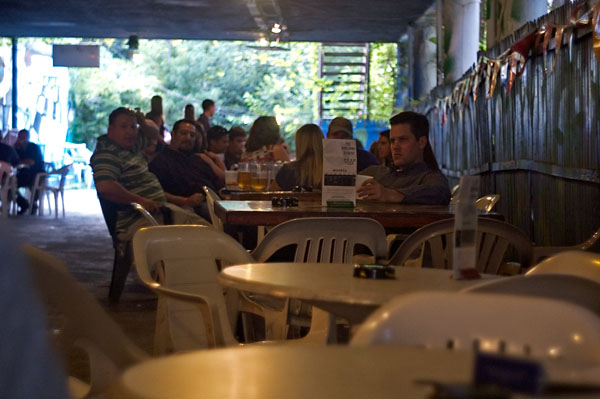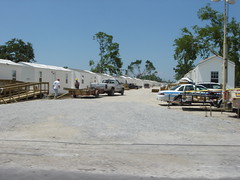what's-it's-name Park
I'm not necessarily opposed to all stadium naming deals. As long as the name isn't replacing a historically significant name and is on the stadium long enough to form a lasting recognition between the name of the stadium and the team which plays there, fair enough.
But there's a few problems with the current spate of brand-new ballparks with brand-new sponsor naming rights.
Stadiums in the first wave of the building boom have already moved on and changed from their initial name. I still think of the stadium in Houston as Enron Field, and I still refer to the Giants' park as PacBell.
The other problem is with so many new corporately-tagged stadiums, the names just blur together. I saw a game in Philadelphia just a couple weeks ago, and I had to look up the name of the stadium when I started to write this post.
The name (Citizen Bank Park) blurs away in my memory, and the park itself generally does the same. It has all the requisite new-retro styling. The concessions are varied and plentiful (and in a nice touch, a decent selection of microbrews are the same price as the big-name standards).
There are a few nice touches. The bullpens are both in centerfield, with the visitors' pen stacked a level above the home pen. When a visiting reliever is called into the game, he has to run down the stairs and past the Phillies bullpen staff to reach the field. Above the bullpens is a standing-room concourse, so fans can perch at the rails and look down at the pitchers warming up. It's like a balcony seat, with a pretty good view of the game as well.
There's also a few confusing touches. Television monitors are mounted above the back of the lower-level sections along the third-base line, so fans in the concourse or the further-back seats can see the action. There are no such monitors along the first-base side, even though the areas are otherwise symmetrical and I believe the price levels of the seats are the same.
I bought an upper-deck seat, but mostly stayed with the standing room crowd. I wandered the stadium, stopping to watch each inning behind the seats of a different section. (Ushers were stationed just about everywhere checking tickets, although I probably could have made it into a lower-level seat long before I actually did in the eighth inning).
The atmosphere reminded me of St. Louis. Same red-clad crowd, same general feeling of a baseball-savvy crowd. There was a surprising crowd of more than 42,000 for a Wednesday afternoon game. In a nice touch, the ushers prevented anyone moving from the concourse into their seating area during an at-bat.
The game was a good one, as well. Tied up late before the Phillies pushed past the White Sox for what was, in the end, an easy win.
 The archived ramblings of my time as a world traveler up to my current life in Washington, D.C.
The archived ramblings of my time as a world traveler up to my current life in Washington, D.C.




